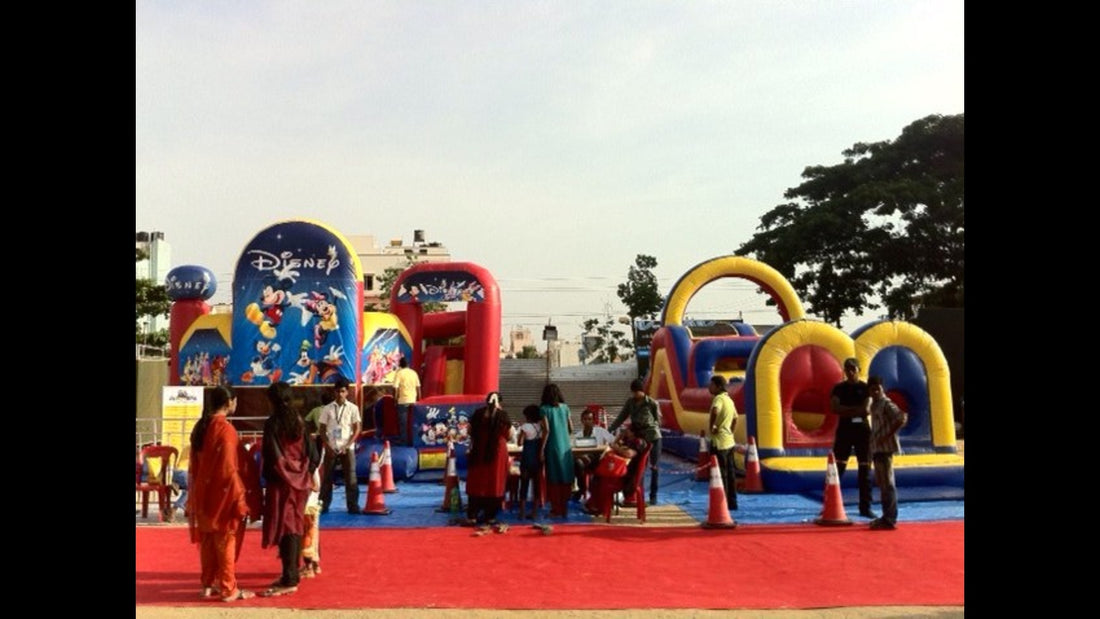
Reside & Thrive: The Ultimate Apartment Gathering
Share
Organizing a community social event with bouncy castles, food stalls, and lots of fun activities can be a rewarding experience. Here's a step-by-step guide to help you plan and execute a successful event:
-
Define Your Event Goals and Objectives:
- Determine the purpose of your event. Is it a fundraiser, a neighborhood get-together, or a community celebration? Understanding your goals will guide your planning.
-
Create a Planning Committee:
- Form a dedicated team of volunteers who can help with various aspects of the event, such as logistics, marketing, entertainment, and safety.
-
Set a Budget:
- Determine the overall budget for your event. This should include expenses like rentals, permits, marketing materials, entertainment, and supplies.
-
Choose a Date and Venue:
- Pick a suitable date and location for your event. Consider factors like weather, accessibility, and the availability of utilities (electricity, water).
-
Obtain Permits and Insurance:
- Check with local authorities to understand what permits are required for your event, especially if you plan to have bouncy castles. Additionally, consider event insurance to protect against unforeseen incidents.
-
Book Vendors and Entertainment:
- Secure vendors for food stalls, bouncy castles, and any other attractions or entertainment you want to include. Make sure to get contracts in writing.
-
Promote Your Event:
- Create a marketing plan to raise awareness about your event. Use social media, local newspapers, flyers, and community websites to spread the word.
-
Arrange for Safety and First Aid:
- Safety should be a top priority. Ensure there are first-aid stations and staff trained in basic first aid. If you have inflatable bouncy castles, have them inspected for safety and supervise their use.
-
Plan Fun Activities:
- Think of engaging activities for all age groups, such as games, contests, live music, or arts and crafts. Create a schedule so attendees know what's happening when.
-
Food and Refreshments:
- Arrange for a variety of food vendors to cater to different tastes. Consider dietary restrictions and options for kids. Ensure proper sanitation practices are followed.
-
Decorations and Signage:
- Decorate the venue to create a festive atmosphere. Use banners, signs, and directional markers to guide attendees.
-
Trash and Recycling Stations:
- Set up recycling and trash stations throughout the event to keep the venue clean.
-
Volunteer Management:
- Assign specific tasks to volunteers and ensure they understand their roles and responsibilities.
-
Emergency Plan:
- Create a comprehensive emergency plan that includes contact information for all key team members and authorities. Be prepared for any medical emergencies or unexpected incidents.
-
Day-of Coordination:
- On the day of the event, have a team in place to manage logistics, oversee vendors, and handle any issues that may arise.
-
Collect Feedback:
- After the event, gather feedback from attendees and volunteers to help improve future events.
-
Financial Reporting:
- After the event, create a financial report detailing income and expenses. This will help you assess the event's success and plan for future ones.
Remember that planning a community event takes time and effort, but with proper organization and teamwork, you can create a memorable and enjoyable experience for your community.
